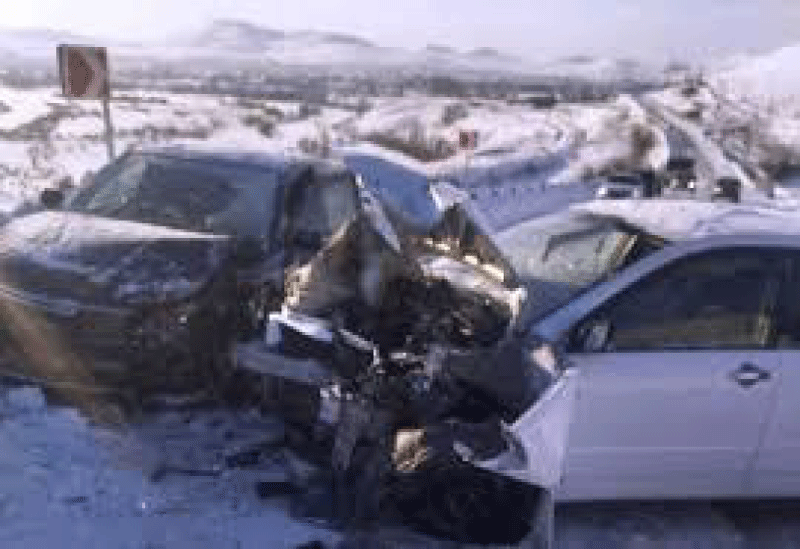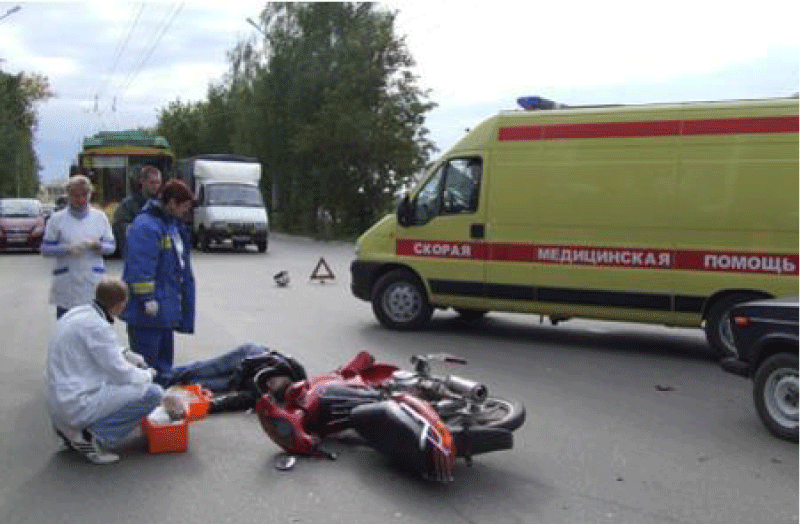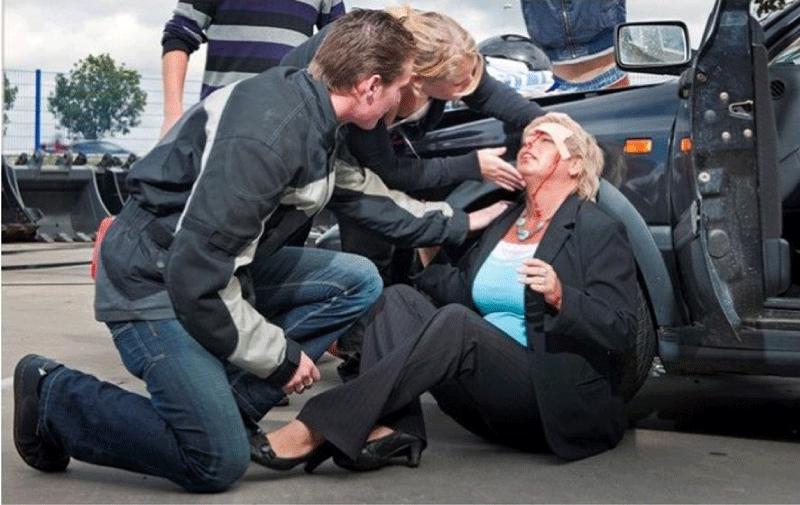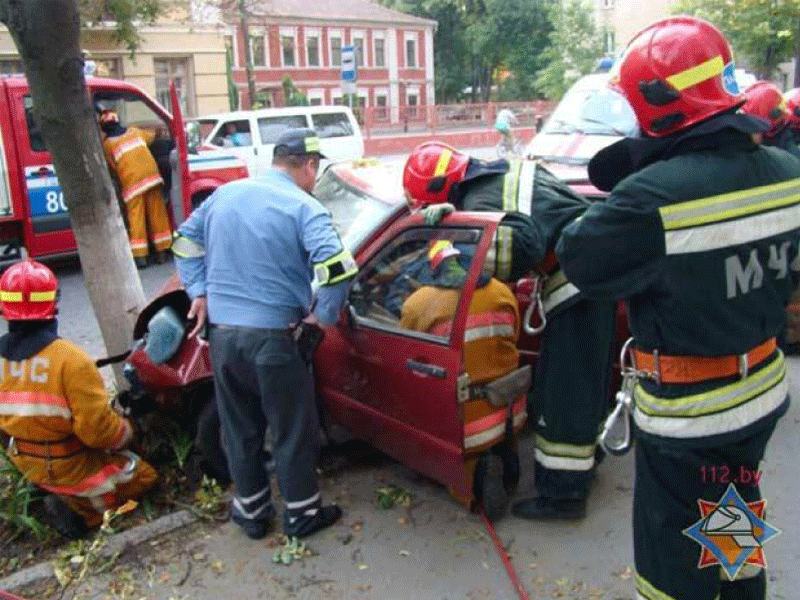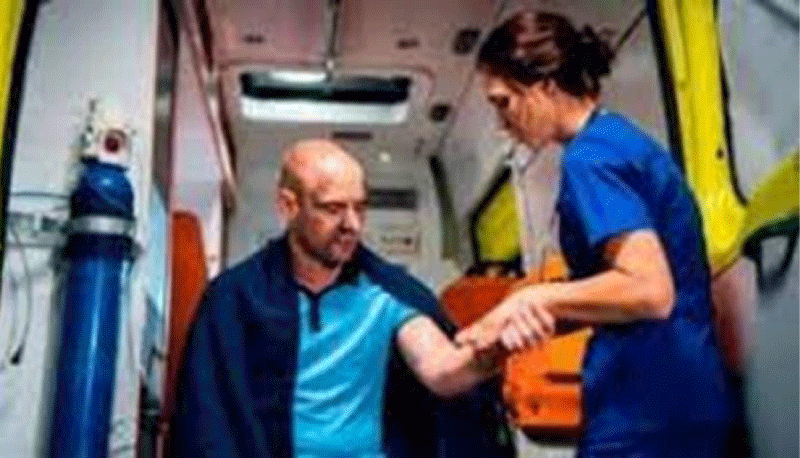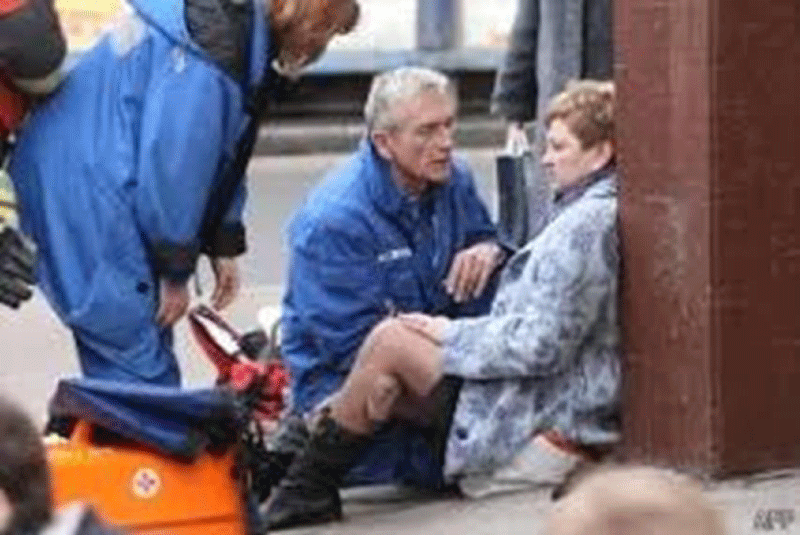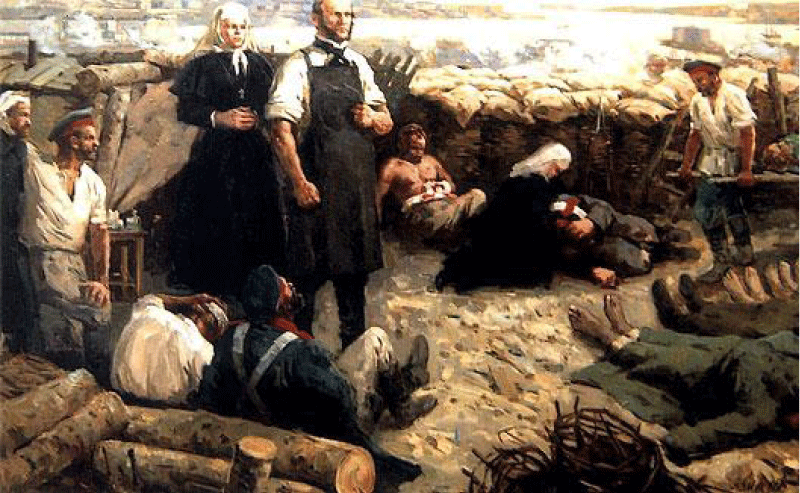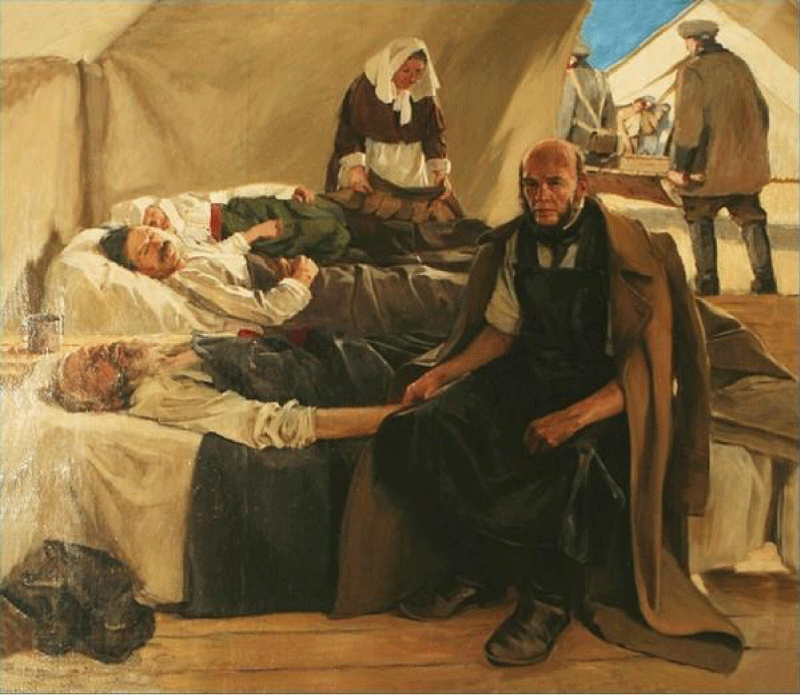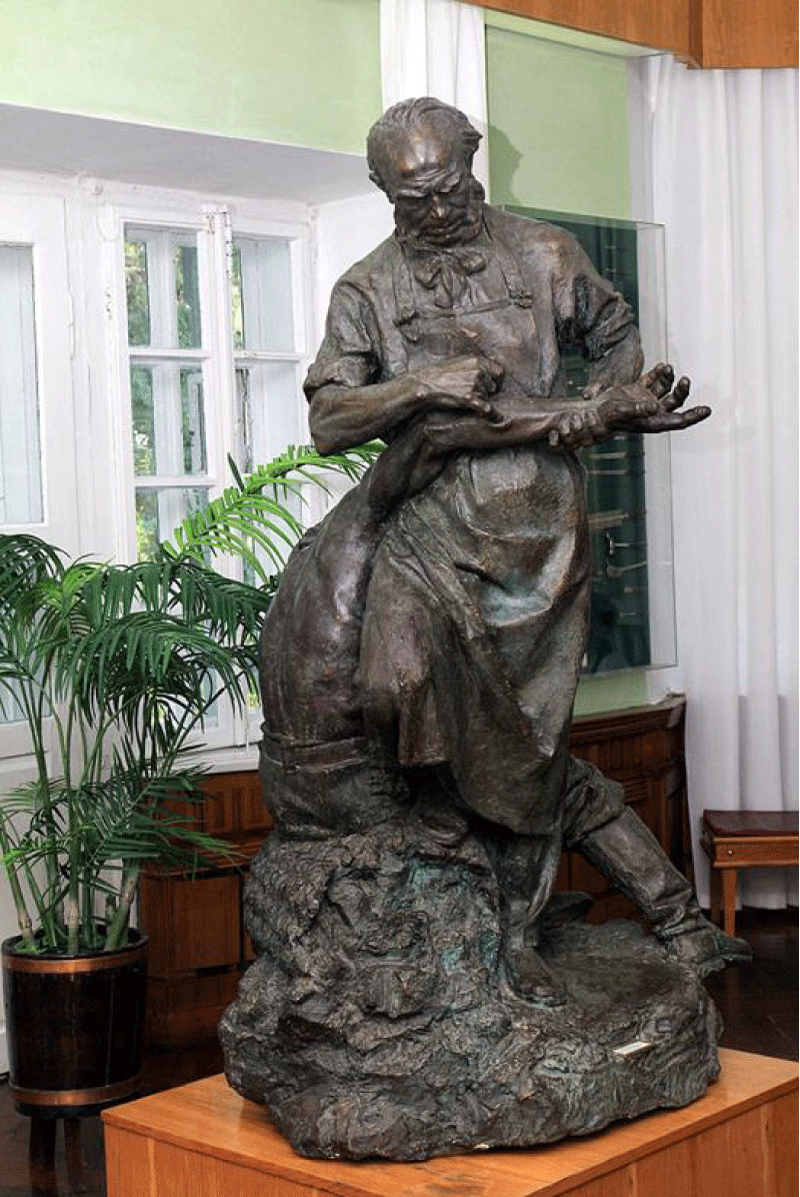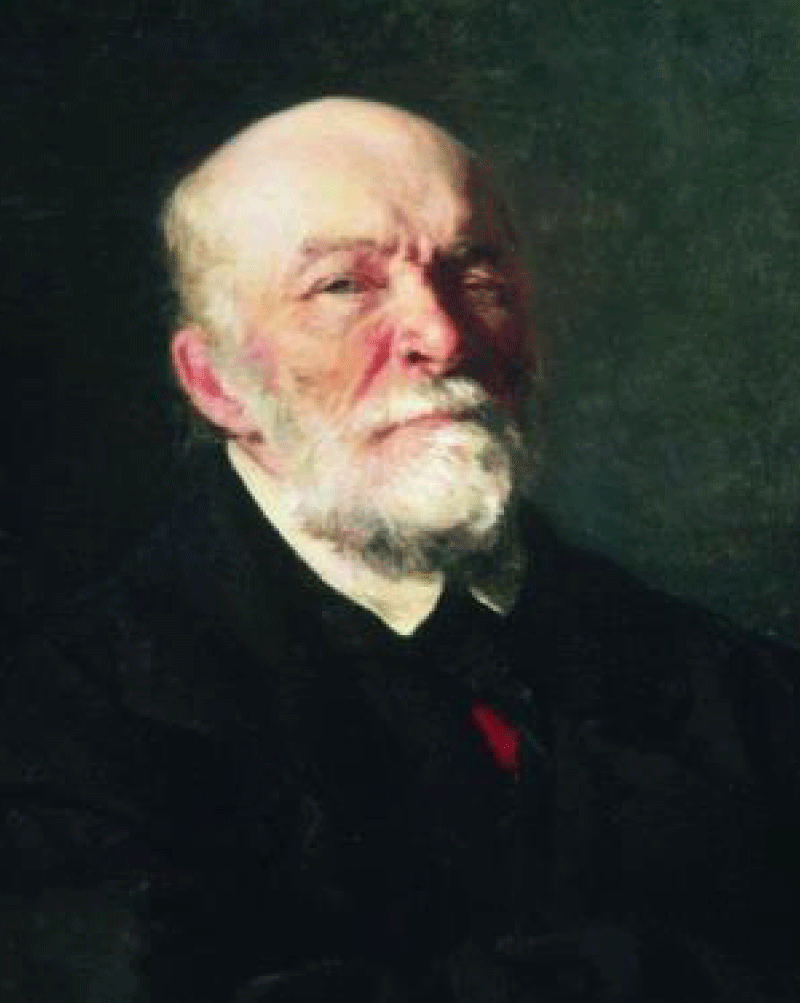More Information
Submitted: March 06, 2024 | Approved: March 28, 2024 | Published: March 29, 2024
How to cite this article: Shapovalov KA, Shapovalova LA. Lecture: "First Aid to the Population in Case of Traumatic Shock during Accidents, Catastrophes, Natural Disasters, and Terrorist Attacks. Anti-shock Measures in the Center of Mass Destruction and during the Evacuation Stages" of the Subject "Life Safety" for Humanitarian and Technical Universities. Arch Surg Clin Res. 2024; 8: 016-026.
DOI: 10.29328/journal.ascr.1001079
Copyright License: © Shapovalov KA, et al. This is an open access article distributed under the Creative Commons Attribution License, which permits unrestricted use, distribution, and reproduction in any medium, provided the original work is properly cited.
Keywords: Didactics; Traumatic shock; First aid; Accidents; Disasters; Natural disasters; Terrorist attacks; Emergencies; Subject “Life Safety”
Lecture: "First Aid to the Population in Case of Traumatic Shock during Accidents, Catastrophes, Natural Disasters, and Terrorist Attacks. Anti-shock Measures in the Center of Mass Destruction and during the Evacuation Stages" of the Subject "Life Safety" for Humanitarian and Technical Universities
Shapovalov KA1,2* and Shapovalova LA1
and Shapovalova LA1
1State Educational Institution of Additional Pedagogical Education "Komi Republican Institute for the Development of Education", Syktyvkar, Komi Republic, Russian Federation
2State Budgetary Health Institution of the Republic of Komi "Syktyvkar Children's Polyclinic No. 3", Syktyvkar, Komi Republic, Russian Federation
*Address for Correspondence: Shapovalov KA, State Educational Institution of Additional Pedagogical Education "Komi Republican Institute for the Development of Education", State Budgetary Health Institution of the Republic of Komi "Syktyvkar Children's Polyclinic No. 3", Syktyvkar, Komi Republic, Russian Federation, Email: [email protected]
To prepare the population for first aid in case of traumatic shock, algorithms for the fundamentals of didactics of the educational topic “First aid to the population in case of traumatic shock during accidents, disasters, natural disasters and terrorist attacks” of the subject “Life Safety” are proposed. 32 years of experience in teaching the subject in humanitarian state educational institutions of higher professional education of a non-medical profile in the city of Syktyvkar are summarized. Educational questions are considered: 1) The concept of shock; 2) Traumatic shock; 3) Mechanisms of injury that contribute to the development of traumatic shock. Predisposing factors. Complications. At-risk groups; 4) Classification, phases, and degrees of shock; 5) Universal first aid algorithm; 6) Basic anti-shock measures in the source of mass destruction and at the stages of evacuation; 7) Features of anti-shock measures in children; 8) Typical first aid mistakes for traumatic shock. For each of the educational issues considered, a summary of the material presented is given. Depending on the purpose of studying the topic, purpose, content of educational material, and form of organization of training, the number of hours allocated to its presentation and study in various forms of the educational process is established. Their distribution includes 1 lecture (2 hours), 1 seminar (2), 1 practical lesson (2), and 6 hours of independent work by students.
To prepare the population for providing first aid in case of traumatic shock, algorithms for the fundamentals of didactics of the educational topic “First aid to the population in case of traumatic shock during accidents, disasters, natural disasters and terrorist attacks” of the subject “Life Safety” are proposed. 32 years of experience in teaching the subject in humanitarian state educational institutions of higher professional education of a non-medical profile in the city of Syktyvkar are summarized. Educational questions are considered: 1) The concept of shock; 2) Traumatic shock; 3) Mechanisms of injury that contribute to the development of traumatic shock. Predisposing factors. Complications. At-risk groups; 4) Classification, phases, and degrees of shock; 5) Universal first aid algorithm; 6) Basic anti-shock measures in the source of mass destruction and at the stages of evacuation; 7) Features of anti-shock measures in children; 8) Typical first aid mistakes for traumatic shock. For each of the educational issues considered, a summary of the material presented is given. Depending on the purpose of studying the topic, purpose, content of educational material, and form of organization of training, the number of hours allocated to its presentation and study in various forms of the educational process is established. Their distribution includes 1 lecture (2 hours), 1 seminar (2), 1 practical lesson (2), and 6 hours of independent work by students.
Shock
(French choc, literally - push, blow), is an acutely developing and life-threatening condition that occurs as a result of any excessive exposure and is characterized by a progressive disruption of the activity of all physiological systems of the body as a result of acute oxygen starvation. The main feature of shock is a disruption of the microcirculatory system: a disorder of capillary blood flow in tissues due to disruption of the contractile activity of the heart, the tone of arterial and venous vessels, the function of the capillaries themselves, and changes in blood viscosity (Figure 1)
Figure 1: Car collision on a winter road.
The term “shock” refers to the body’s stereotypical reaction to various kinds of extreme influences. Shock can be caused by injury, burn, surgery (traumatic, burn, surgical shock), transfusion of incompatible blood (hemolytic shock), anaphylaxis (anaphylactic shock), cardiac dysfunction (cardiogenic shock), ischemia of tissues and organs, large blood loss, etc. d. Shock is most characterized by increasing, severe weakness and a progressive drop in blood pressure [1-7] (Figure 2).
Figure 2: Road accident.
- Traumatic;
- Hemorrhagic;
- Burn;
- Endotoxic;
- Postoperative;
- Cardiogenic;
- Anaphylactic;
- Allergic;
- Hemolytic;
- Beam;
- Electric shock [8-12] (Figure 3).
Figure 3: Acute blood loss in a car accident.
Traumatic shock is a severe pathological process that occurs as a result of significant trauma and leads to the disruption of all vital functions of the body. These disorders are manifested by insufficiency of blood circulation and respiration, neuroendocrine regulation, and metabolic processes.
The immediate cause of traumatic shock is damage to organs and systems of the body, leading to a sudden disruption of their normal functioning [13] (Figure 4).
Figure 4: Evacuation of a victim from a car..
Mechanisms of injury that contribute to the development of traumatic shock;
1) Accidents on all types of transport: road, rail, river, sea, aviation;
2) Violations of safety regulations at work;
3) Falls from a height;
4) Knife wounds;
5) Gunshot injuries (bullet, shrapnel);
6) Cooling;
7) Burns (thermal, chemical, radiation, electrical);
8) Natural and man-made disasters.
In the occurrence and further development of traumatic shock, the main role belongs to the initial state of the body.
Predisposing factors:
1) Massive acute blood loss;
2) Traumatic brain injury;
3) Prolonged painful irritation;
4) Abdominal injuries with damage to internal organs;
5) Fractures of the pelvic bones;
6) Overwork;
7) Fasting;
8) Radioactive radiation.
Traumatic shock is complicated by:
1) Isolated fractures of large bones (hip, shoulder, pelvic bones, spinal column);
2) Multiple bone fractures;
3) Damage to the organs of the thoracic cavity;
4) Injuries to the abdomen and pelvis;
5) Multiple trauma;
6) Combined injuries;
7) Combined radiation injuries.
At-risk groups:
1) Workers of hazardous industrial production;
2) Drivers and passengers of all types of vehicles;
3) Pedestrians;
4) Victims with chronic pathology of the cardiovascular and nervous systems.
5) Persons of older age groups;
6) Children.
The leading cause in the development of the picture of traumatic shock is the rapid loss of a large volume of plasma or blood. In the case of traumatic shock, it is not so much the amount of blood loss that is important, but rather its speed, since the injured person’s body does not have time to adjust and adapt. Therefore, shock often occurs when large arteries are injured, and its severity is aggravated by severe pain and neuropsychic stress.
Often the development of traumatic shock results from injuries that damage particularly sensitive areas (neck, perineum) and vital organs. The severity of shock in these cases is determined by the intensity of the pain syndrome, the amount of blood loss, the degree of preservation of organ function, and the nature of the injury [14-24] (Figure 5).
Figure 5: Examination of a victim in an ambulance.
Classification of shock. phases and degrees
Based on the time of occurrence, shock is distinguished between primary and secondary. Primary shock develops immediately after the lesion or within the next 1 hours - 2 hours. Secondary shock occurs 4 hours - 24 hours later. after injury and even later, often as a result of additional trauma to the victim during transportation, cooling, resumption of bleeding, rough manipulations during medical care, etc. A type of secondary traumatic shock is postoperative shock in the wounded.
Rapid blood loss leads to a sharp decrease in blood in the body. The injured person's blood pressure drops, the tissues receive significantly less oxygen and other nutrients, and intoxication increases. The victim’s body tries to independently stabilize blood pressure and compensate for blood loss. Substances that constrict blood vessels (dopamine, cortisol, adrenaline) are released into the blood. Spasm of peripheral vessels occurs. Therefore, the body manages to maintain blood pressure at a normal level for some time. The volume of circulating blood continues to decrease, so it is redistributed in favor of the heart, lungs, and brain. For this reason, peripheral tissues are poorly supplied with necessary substances, which leads to increased intoxication of the body. The skin, muscles, and abdominal organs are primarily affected.
However, after some time, this mechanism also stops working. In the almost complete absence of oxygen, the vessels dilate again, and some of the blood enters here. As a result, the heart does not receive the required volume of blood, and normal blood circulation is disrupted. The pressure drops. If it drops below a critical level, the kidneys fail (urine filtration decreases), and then the intestinal wall and liver. This leads to the fact that many microbes and their toxins enter the blood, and toxemia begins. The situation is aggravated by numerous foci of dead tissue resulting from a lack of oxygen, as well as a general metabolic disorder and acidification of the blood [25-28] (Figure 6).
Figure 6: Examination of a victim in a state of traumatic shock.
The clinical picture of traumatic shock is characterized by the preservation of the victim’s consciousness. There are two phases of shock: erectile and torpid.
The erectile phase (phase of arousal) develops after the damage; it is often short-lived (up to 20 minutes) and is not always observed (15% - 20% of cases). In the erectile stage, speech and motor arousal of the victim are noted: the patient is restless, verbose, mobile, euphoric, and disoriented. The pulse is frequent, blood pressure may be increased. The skin is pale, there is an increase in the function of the endocrine glands and metabolic processes. Noteworthy is the discrepancy between the victim’s behavior and the severity of the injuries (Figure 7).
Figure 7: Sidorov A. Pirogov N.I. at the forward dressing station of Sevastopol. [Available at URL: https://russian.rt.com/science/article/806327-nikolai-pirogov-210-let (accessed 05.03.2024)].
The erectile phase of traumatic shock was described in 1864 by the outstanding Russian surgeon Nikolai Ivanovich Pirogov (1810 - 1881), who characterized it as follows: “If strong screams and moans are heard from a wounded person whose features have changed, his face has become convulsively distorted, pale, blue and swollen from screaming, if his pulse is intense and fast, his breathing is short and frequent, then no matter what his injury is, you need to rush to help” (Figure 8).
Figure 8: Repin I.E. Pirogov N.I. in besieged Sevastopol. [Available at URL: https://vk.com/wall-7482509_8468 (accessed 05.03.2024)].
The erectile phase of traumatic shock at the prehospital stage is diagnosed by medical workers only in 8.5% - 10.2% of victims, and in the hospital - in 4.0% - 5.0%. That is, the longer the time passes after the injury, the less likely it is to register the excitation phase after the injury.
During the erectile phase, the body “actively protects” itself from injury; which is characterized by rapid activation of metabolic processes (hypermetabolism and increased excitability of the brain under the influence of hypercatecholaminemia as a consequence of blood loss and afferent pain impulses. The short duration of this phase, and, consequently, its rare registration is explained by the depletion of tension in the sympathetic-adrenal system or the discrepancy between this tension and the needs of the body (relative adrenal insufficiency) (Figure 9).
Figure 9: Sculpture Surgeon N.I. Pirogov at work. [Available at URL: https://ru.wikipedia.org/wiki/2_2.JPG (accessed 05.03.2024)].
The erectile phase is characterized by pronounced psychomotor agitation of the patient against the background of centralized blood circulation. The behavior of the injured may be inappropriate; they rush about, scream, make erratic movements, and resist examination and treatment. Getting in touch with them can sometimes be extremely difficult. Blood pressure may be normal or close to normal, but tissue circulation is already impaired due to the development of its centralization. Various breathing disorders may occur, the nature of which is determined by the nature of the injury (Figure 10).
Figure 10: Repin I.E. Portrait of surgeon N.I. Pirogov, 1881, Moscow. State Tretyakov Gallery. Oil on canvas 64.5 x 53.4 cm. https://upload.wikimedia.org/wikipedia/commons/4/43/Ilya_Repin_Portrait_of_the_Surgeon_Nikolay_Pirogov_1881.jpg
A long excitation phase (over 2 hours - 3 hours) is a poor prognostic sign. The erectile stage turns into a torpid stage.
The torpid phase (inhibition phase) of shock is characterized by inhibition of all vital functions of the body, which is expressed by the following signs: 1) general lethargy of the victim (“rigidity”); 2) consciousness, as a rule, is preserved; 3) pale skin; 4) sticky sweat; 5) drop in blood pressure; 6) decrease in body temperature; 7) decreased tendon reflexes, pain and tactile sensitivity; 8) slowdown of metabolic processes.
The torpid phase of traumatic shock N.I. Pirogov described it this way: “... with an arm or leg torn off, he lies so numb at the dressing station, motionless. He does not scream, does not scream, does not complain, does not take part in anything, and does not demand anything: his body is cold, his face is pale, like that of a corpse; the gaze is motionless and directed into the distance; the pulse, like a thread, is barely noticeable under the finger and with frequent alternations. The numb person either does not answer questions at all or only in a barely audible whisper to himself; breathing is also barely noticeable. The wound and skin are almost completely insensitive, but if the diseased nerve hanging from the wound is irritated by something, then the patient with one slight contraction of the personal muscles reveals a sign of feeling. Sometimes this condition disappears within a few hours from the use of stimulants, sometimes it continues until death.”
During the torpid phase of traumatic shock, the victim’s body “adapts” to new living conditions.
The torpid phase of shock is divided into 4 degrees of severity and characterized by a complex of clinical manifestations, the main of which at the prehospital stage is the level of blood pressure and the volume of blood loss.
The manifestation of circulatory disorders that characterize traumatic shock is a change in skin color, which becomes pale, cyanotic, mottled, moist, and cold. When a so-called white spot is detected, long-term local pallor of the nail bed or the skin of the dorsum of the hand is determined, which characterizes a violation of capillary circulation. The pulse becomes frequent and small, the blood supply to the saphenous veins decreases, as well as blood pressure. In the torpid phase, blackouts of consciousness, and stupor occur, and a coma develops as a manifestation of extreme cerebral hypoxia caused by cerebral circulation disorders.
There are four degrees of the torpid phase of shock:
Mild shock (I degree) most often occurs as a result of single injuries. General condition is satisfactory. Consciousness is preserved, the patient answers questions correctly but is reluctant to engage in conversation. The skin and visible mucous membranes are pale. Body temperature is normal or slightly reduced. The pupils are of normal size and react to light. The pulse is rhythmic up to 100 beats per minute. Maximum (systolic) blood pressure 100 mm Hg. Art. Breathing is uniform, deep, and sometimes rapid up to 20 - 24 per minute. All reflexes are not sharply reduced. The average amount of blood loss for open injuries does not exceed 300 ml - 400 ml. Providing rest, immobilization, and anesthesia for the damaged area has a good effect.
Moderate shock (II degree) is characterized by pronounced depression of the affected person. Consciousness is preserved. The victim speaks in a low voice. Pale skin, profuse cold sticky sweat. Sluggish reaction to light. Pulse 100 - 120 beats per minute, weak filling. Blood pressure decreases (80 mm Hg). Heart sounds are muffled. Body temperature drops to 35.80 C. Blood loss is determined to be 1,000 ml - 1,500 ml. In case of II degree of shock, it is necessary to carry out immediate active treatment of the victim.
Severe shock (III degree) is usually caused by multiple, mainly open injuries, often accompanied by significant blood loss (1,500 ml - 2,000 ml). The general condition is serious. Consciousness is preserved, and the victim is indifferent to the environment and his damage. The pupils are narrow and poorly responsive to light. All reflexes are reduced, the skin is pale, with a grayish tint, cold to the touch; body temperature is low, pulse is 120 - 160 beats per minute, thread-like, palpable only on large vessels. Heart sounds are muffled. Systolic blood pressure decreases to 70 mm Hg. Art. Breathing is shallow, frequent, and uneven in depth.
Long-term decrease in blood pressure below 70 mm Hg. Art. accompanied by a sharp decrease in urine output, a profound metabolic disorder, which further impedes the use of oxygen by tissue cells. As a result, irreversible changes occur in the vital systems of the body.
In the first three degrees of shock, changes in the cells of the body are considered reversible, and vigorous measures are necessary to remove the affected person from a serious condition.
Extremely severe shock (IV degree) – Terminal condition. Irreversible changes occur in the cells of the central nervous system and other organs. Anti-shock measures are usually not effective.
It is important to relate the severity of traumatic shock to the amount of blood loss. Each degree of traumatic shock corresponds to its blood loss in liters, equal to the degree of traumatic shock. In the case of first-degree traumatic shock, the volume of circulating blood is reduced by 0.9 l, second-degree - by 1.7 l, third-degree - by 2 l, fourth-degree, terminal state - by 3.48 l. Calculations were made without taking into account sequestered blood in its vessels (Z. Alogova). In a simplified version it will look like this. In the case of traumatic shock of the first degree, blood loss is 1 liter, the second - 2 liters, the third - 3 liters, the fourth - 4 liters. This scheme is easily used when providing first (pre-hospital emergency) aid in disaster situations when rescuers cannot use calculations, diagrams, laboratory tests, and nomograms [29-32].
When estimating the amount of blood loss, one can proceed from known data on the dependence of blood loss on the nature of the injury. Thus, with a fracture of the ankle in a middle-aged adult, blood loss does not exceed 250 ml, with a fracture of the shoulder - it ranges from 300 to 500 ml, of the lower leg - 300 ml - 350 ml, of the hip - 500 ml - 1000 ml, of the pelvis - 2500 ml - 3000 ml, and within multiple fractures or associated trauma, blood loss can reach 3000 ml - 4000 ml.
Even with minor injuries, shock is observed in approximately 3% of victims, and if the situation is aggravated by multiple injuries to internal organs, soft tissues, or bones, then this figure increases to 15%. The probability of death due to traumatic shock is quite high and ranges from 25 to 85% [33]. It is all the more important to correctly assess the symptoms of traumatic shock and provide first (pre-hospital emergency) aid to the victim.
Symptoms of shock:Dry mouth, thirst;
Frequent breathing;
Weakness, lethargy;
Increased heart rate;
Anxiety;
Confused consciousness, possible loss of consciousness.
Their combination in the presence of injury allows us to establish a diagnosis of traumatic shock [34-38].
Universal first aid algorithm
The general sequence of actions at the scene of an incident with the presence of victims. If a person becomes a participant or witness to an incident, he must take the following steps.
Assess the situation and ensure a safe environment for first aid:
1) identify threatening factors for one’s own life and health; 2) identify threatening factors for the life and health of the victim; 3) eliminate threats to life and health; 4) stop the effect of damaging factors on the victim; 5) if necessary, estimate the number of victims; 6) remove the victim from the vehicle or other hard-to-reach places (if necessary); 7) move the victim (if necessary).
Determine whether the victim is conscious: If you have consciousness, go to step 7 of the Algorithm; in the absence of consciousness, go to step 3 of the Algorithm.
Restore airway patency and determine signs of life:
1) Throw back your head with your chin up; 2) extend the lower jaw (if necessary); 3) determine the presence of normal breathing using hearing, vision, and touch; 4) determine the presence of blood circulation by checking the pulse in the main arteries (simultaneously with the determination of respiration and with appropriate preparation). If there is breathing, go to step 6 of the Algorithm; if there is no breathing, go to step 4 of the Algorithm.
Call emergency medical care and other special services: Call an ambulance or other special services whose employees are required to provide first aid following federal law or a special rule (by phone 03, 103, or 112, involving an assistant or using the speakerphone on the phone).
Begin cardiopulmonary resuscitation by alternating:
1) hand pressure on the victim’s sternum; 2) artificial respiration “Mouth to mouth”, “Mouth to nose”, using artificial respiration devices. When signs of life appear, go to step 6 of the Algorithm.
If signs of life appear (or are present), take measures to maintain airway patency in one or more ways:
1) give a stable lateral position; 2) throw back your head with your chin up; 3) extend the lower jaw.
Conduct a general examination of the victim and take measures to temporarily stop external bleeding in one or more ways:
1) applying a pressure bandage; 2) finger pressure of the artery; 3) direct pressure on the wound; 4) maximum flexion of the limb at the joint; 5) applying a tourniquet.
Conduct a detailed examination of the victim to identify signs of injuries, poisoning, and other conditions that threaten his life and health, call an ambulance (if it has not been called earlier):
1) conduct a head examination; 2) conduct an examination of the neck; 3) conduct a breast examination; 4) conduct a back examination; 5) conduct an examination of the abdomen and pelvis; 6) examination of the limbs; 7) apply bandages for injuries to various areas of the body, including occlusive (sealing) for injuries to the chest; 8) carry out immobilization (using improvised means, auto-immobilization, using medical devices); 9) fix the cervical spine (manually, with improvised means, using medical devices); 10) stop exposure of the victim to hazardous chemicals (flush the stomach by drinking water and inducing vomiting, remove from the damaged surface and rinse the damaged surface with running water); 11) carry out local cooling in case of injuries, thermal burns and other effects of high temperatures or thermal radiation; 12) carry out thermal insulation in case of frostbite and other effects of exposure to low temperatures.
Give the victim an optimal body position: To provide him with comfort and reduce his suffering.
Constantly monitor the condition of the victim and provide psychological support: Presence of consciousness, breathing, and circulation
Transfer the victim to the emergency medical team: Transfer the victim to the emergency medical team and other special services, whose employees are required to provide first aid by federal law or with a special rule upon their arrival and order the transfer of the victim to them, providing the necessary information.
Basic anti-shock measures in the source of mass destruction and at the stages of evacuation:
1) Inspection of the victim and the scene of the incident should not take a long time (no more than 3 minutes) and include the following actions:
• Assessment of the current situation and the severity of the condition of the victim(s) and possible consequences for those assisting;
• Detailed examination of the victim(s):
✔ Head - for signs of damage and bleeding;
✔ Neck and chest - for the presence of injuries and damage, as well as air in the pleural cavity;
✔ Abdomen - for the presence of internal bleeding, and tension;
✔ Pelvis and limbs - for the presence of fractures and injuries;
✔ Central nervous system - indirectly through assessment of the activity of consciousness: the presence or absence of consciousness: reaction to a vocal stimulus, pain;
✔ Control of airway patency: a) the victim breathes independently; b) breathing is not possible due to a foreign body or vomit;
✔ Assessment of the integrity of the skin and the absence of damage to the circulatory system (bleeding);
2) Fighting asphyxia (removing vomit, blood, soil, foreign bodies from the mouth, preventing tongue retraction, etc.).
3) Temporary stop of bleeding. Use finger pressure on the vessel in the wound, followed by the application of a tourniquet for arterial bleeding and a pressure bandage for venous bleeding.
4) Freeing the victim from the rubble.
5) Extinguishing burning clothes.
6) Applying an occlusive dressing to a penetrating wound of the chest to transform an open pneumothorax into a closed one.
7) Fighting pain: a) Using any painkillers from the analgesic group: ibuprofen, analgin, ketorol, and others; b) Administration of a narcotic analgesic from a syringe tube; c) In the absence of contraindications, it is possible to give a small amount of alcohol (150 ml) to relieve pain (alcohol, vodka), if there are no abdominal injuries.
8) Treat wounds and apply sterile dressings.
9) The use of primary transport immobilization using improvised or standard means for fractures of the bones of the limbs, pelvis, and ribs.
10) Warming by wrapping.
11) It is necessary to calm the injured person.
12) Removal of unconscious wounded people from the lesion in a prone position (the head must be turned to the side to prevent suffocation) [39-44].
First aid:
1) Call an ambulance;
2) To maintain optimal body temperature, cover the victim with a blanket, coat, or thick cloth. This is important to do especially during the cold season. Give warm drinks if there are no abdominal injuries;
3) Place on a flat surface. The torso and head should be at the same level. If there is a suspicion of spinal damage, then the person should not be touched;
4) It is recommended to raise your legs, this improves blood circulation to important organs. This should not be done if the victim has an injury to the neck, head, leg, or hip, or a suspected stroke or heart attack;
5) The victim should be given painkillers. As a last resort, you can give a little alcohol or vodka;
6) To ensure free breathing, it is necessary to unfasten clothes, loosen waist belts, and remove interfering foreign bodies from the respiratory tract. If there was vomiting, clear the oral cavity of vomit. If there is no breathing, artificial ventilation of the lungs should be started (mouth-to-mouth or mouth-to-mouth);
7) External bleeding must be stopped using a pressure bandage, tourniquet, wound tamponade, and other methods of temporarily stopping bleeding. It must be taken into account that children are particularly sensitive to blood loss;
8) Cover existing wounds with a primary dressing;
9) Constantly stay close to the victim and carefully monitor changes in his condition.
10) Talk to the victim, calm him down, do not allow him to move;
11) In the absence of abdominal injuries, provide the victim with plenty of fluids (warm tea);
12) Ensure careful transportation to a medical facility [45,46].
Features of anti-shock measures in children
Traumatic shock in children occurs more often, develops quickly, reaches great depths in a short time (II and III degrees), and is more severe due to the imperfection of compensatory-adaptive mechanisms. At the same time, even deep, very persistent functional disorders in their organs and systems are, in most cases, reversible.
The complex of anti-shock measures for children is the same as for adults but has its characteristics. Anti-shock measures should be started as early as possible and carried out quickly. At the same time, they spare the child’s psyche as much as possible and care for him more carefully. The temperature in the room should be 20 degrees higher than in adults (up to +260 C), oxygen is prescribed with the insertion of a catheter through the nose. Simultaneous injection of blood under pressure into a vein and even into an artery does not always give a positive result. Intravenous transfusion of blood and fluids should be done under the control of venous pressure. Antishock solutions need to be transfused in a more limited manner to avoid causing pulmonary edema. Stabilization of blood pressure is carried out by intravenous administration of a solution of novocaine. Particular caution must be observed when using narcotic analgesics and hypnotics. Morphine is not prescribed to children under 5 years of age.
Typical first aid mistakes for traumatic shock:
1) The victim must not be left alone.
2) The patient should not be unnecessarily carried or moved without applying improvised or standard splints. All actions must be careful since inept carrying and shifting can lead to additional injuries to the victim, which will worsen his condition.
3) If the victim’s spine is damaged, it is strictly forbidden to move the victim.
4) You should not apply a splint without first stopping the bleeding, as it may intensify. This worsens the shock and can be fatal.
5) When carrying out primary immobilization, a splint is applied to the limb in the position in which the victim was found. You should not try to adjust or straighten the injured limb on your own. This leads to increased traumatic shock.
6) You cannot independently remove any protruding or visible foreign agents (knife, fittings, branches), splinters, and other objects from the wound. This can increase bleeding, pain, and shock in general.
7) If you suspect an injury to the neck, head, spine, hip, or leg, as well as a stroke or myocardial infarction, you should not raise your legs to improve blood circulation throughout the body [47,48].
If first (pre-hospital emergency) aid for traumatic shock is not provided promptly, then its milder forms can develop into more severe ones. Therefore, when conducting it, the main thing is an integrated approach, which includes identifying violations of important body functions and taking measures to eliminate life-threatening conditions [49-53].
The considered didactic means of the approximate plan of the educational topic “First aid to the population in case of traumatic shock during accidents, disasters, natural disasters and terrorist acts” of the subject “Life Safety” determine the volume, content, order of study and teaching; regulate both the activities of teachers and the educational work of students.
Depending on the purpose of studying the topic, purpose, content of educational material, and form of organization of training, the number of hours allocated to its presentation and study in various forms of the educational process is established. Their distribution includes 1 lecture (2 hours), 1 seminar (2), 1 practical lesson (2), and 6 hours of independent work by students. In a lecture, as a form of knowledge transfer, during which the teacher consistently and systematically, predominantly monologically, presents and explains educational material, it is advisable to include educational questions No. 1 - 4. At seminars, as a form of organizing training, the dominant component of which is independent research and analytical work of students with educational literature and subsequent active discussion of the problem under the guidance of a teacher, it is proposed to bring up educational question No. 5 for discussion. A practical lesson, as a form of organizing the educational process, which is aimed at developing practical skills and is a link between students’ independent theoretical mastery of an academic discipline and the application of its provisions in practice, includes educational questions No. 6, 7, and 8.
The content of extracurricular independent work is detailed by the teacher depending on the characteristics of the student population. It may include the preparation of abstracts, presentations on the proposed fragments of the topic, the development of visual stands, the creation of educational tables, and health bulletins on the medical aspects of the topic being studied. Competitive selection of the best individual works can become the basis for speaking at a meeting of the scientific circle of the department (department) of an educational institution, a youth scientific and practical conference, as well as the basis for exemption from taking a test (exam) in the subject with excellent mastery of theoretical knowledge, practical skills, and abilities, as well as performing individual competitive work.
The authors express their sincere love to their parents. The authors are grateful to Bychikhin N.P., Kucherenko V.Z., Zhuravlev S.M., Novikov P.E., Orlov G.A., Dobrodeeva L.K., Klepikova R.A., Udalova L.S., Lus E.A., Kuznetsova M.N., Smolnikov L.A., Ternovsky L.N., Batygina N.I., Rzhevskaya V.N., Duberman L.B., Akhmeev V.N., Schumacher R.E., Gribanov V.V., and also to all anonymous reviewers for support, useful advice and comments.
Some photographs and drawings, which are freely available on the Internet without indicating the authors, were used in the article in the original and in translation for scientific, informational, and educational purposes, as well as to reveal the creative intent of the authors of legally published works to the extent justified by the purpose of citation.
- Shapovalov KA. Topical issues of injury prevention of floating crew of river fleet: information materials. Arkhangelsk: Arkhangelsk Regional Health Department, Arkhangelsk State Medical Institute, Northern Central Basin Clinical Hospital named after N.A. Semashko. 1988; 1-15.
- Shapovalov KA. The results of the public health care budget faces of the Komi Republic «Komi Republican Hospital» in the dynamics for 5 years. Geneva. World Health Organization, Pubrights. 2011; 24:1-34.
- Gridchik I, Borisov E, Shipkov N. The problem of bleeding in multiple and combined injuries. 2024. In Russian. https://www.vevivi.ru/best/Problema-krovotechenii-pri-mnozhestvennykh-i-sochetannykh-povrezhdeniyakh-ref166801.html
- Collapse, shock, clinical death, impaired consciousness, coma - first aid. cardiopulmonary resuscitation (artificial respiration and cardiac massage). 2024. In Russian. https://www.medicinform.net/pervaja-medicinskaja-pomoc/kollaps-shok-klinicheskaya-smert-narushenie-soznaniya-koma-pervaja-pomosch.html
- Langbein J. Deer Vehicle Collisions in Scotland Monitoring Project 2008. 2011.
- Global status report on road safety 2023. https:// https://www.who.int/publications/i/item/9789240086517 (accessed 05.03.2024).
- Misra P, Majumdar A, Misra MC, Kant S, Gupta SK, Gupta A, Kumar S. Epidemiological Study of Patients of Road Traffic Injuries Attending Emergency Department of a Trauma Center in New Delhi. Indian J Crit Care Med. 2017 Oct;21(10):678-683. doi: 10.4103/ijccm.IJCCM_197_17. PMID: 29142380; PMCID: PMC5672674.
- Shapovalov KA, Shapovalova LA. Traumatic shock: lecture. Syktyvkar, Komi State Pedagogical Institute. 1995; 1-2.
- Shapovalov KA, Shapovalova LA. Security basics of life: hygiene and health, prevention of disease: manual. 2nd ed., Revised and enlarged. Syktyvkar, Komi State Pedagogical Institute. 2002; 128.
- Mitra S, Sarkar AP, Saren AB, Haldar D, Saha I, Sarkar GN. Road Traffic Injuries: A Study on Severity and Outcome among Inpatients of a Tertiary Care Level Hospital of West Bengal, India. J Emerg Trauma Shock. 2018 Oct-Dec;11(4):247-252. doi: 10.4103/JETS.JETS_138_17. PMID: 30568366; PMCID: PMC6262659.
- Fitzharris M, Dandona R, Kumar GA, Dandona L. Crash characteristics and patterns of injury among hospitalized motorised two-wheeled vehicle users in urban India. BMC Public Health. 2009 Jan 12; 9:11. doi: 10.1186/1471-2458-9-11. PMID: 19134225; PMCID: PMC2630936.
- Kleinman ME, Brennan EE, Goldberger ZD, Swor RA, Terry M, Bobrow BJ, Gazmuri RJ, Travers AH, Rea T. Part 5: Adult Basic Life Support and Cardiopulmonary Resuscitation Quality: 2015 American Heart Association Guidelines Update for Cardiopulmonary Resuscitation and Emergency Cardiovascular Care. Circulation. 2015 Nov 3;132(18 Suppl 2):S414-35. doi: 10.1161/CIR.0000000000000259. PMID: 26472993.
- Shapovalov KA, Shapovalova LA. Self-interacting and First Aid for injuries and accidents: a tutorial. Syktyvkar, Syktyvkar State University. 1995; 63.
- Shapovalov KA, Shapovalova LA. Fundamentals of Safety of Life: Safety and security of the population in emergency situations; self-interacting and first aid for injuries and accidents: a tutorial. 3rd edition, revised. and enlarged., CD. Syktyvkar, Komi State Pedagogical Institute. 2003; 162.
- Shapovalov KA, Shapovalova LA. The State Education Standard "Basics of Life Safety" and the educational and methodical complex on discipline for humanitarian, educational and technical universities. Zhizn i Bezopasnost. 2005; (1-2): 483-489.
- Traumatic shock: causes, phases, degrees, first aid. 2024. https://polyclinika.ru/tech/travmaticheskiy-shok-prichiny-fazy-stepeni-pervaya-pomoshch/
- First aid for traumatic shock. 2024. https://www.diagnos.ru/first-aid/travmaticheskij_shok
- Nema SK, Austine J, Ramasubramani P, Agrawal R. Ultrasound-Guided Manipulation does not Prevent Malalignment Over Landmark-Based Fracture Reduction in Distal Radius Fracture (Colles). J Emerg Trauma Shock. 2023 Apr-Jun;16(2):35-42. doi: 10.4103/jets.jets_157_22. Epub 2023 May 25. PMID: 37583377; PMCID: PMC10424739.
- De Niear MA, Tang VD, Nguyen M, Lin LK. Utilization of Ophthalmic Management in Patients with Head-and-Neck Trauma Secondary to Firearms. J Emerg Trauma Shock. 2023 Apr-Jun;16(2):43-47. doi: 10.4103/jets.jets_165_21. Epub 2023 May 30. PMID: 37583378; PMCID: PMC10424738.
- Hellman J, Mahmood B, Lin LK. Anxiety and Depression after Traumatic Open-Globe Injury. J Emerg Trauma Shock. 2023 Apr-Jun;16(2):59-62. doi: 10.4103/jets.jets_154_22. Epub 2023 May 22. PMID: 37583375; PMCID: PMC10424737.
- Respicio JA, Culhane J. In Solid Organ Injury Patients Requiring Blood Transfusion, Hemostatic Procedures are Associated with Improved Survival Over Observation. J Emerg Trauma Shock. 2023 Apr-Jun;16(2):54-58. doi: 10.4103/jets.jets_146_22. Epub 2023 May 23. PMID: 37583383; PMCID: PMC10424735.
- Shapovalov KA, Shapovalova LA. Lecture: «First aid to the population for wounds during accidents, сatastrophes, natural disasters, and terrorist attacks» for Humanitarian and Technical Universities. Archives of Surgery and Clinical Research. 2019; 3(2):040-049. DOI: 10.29328/journal.ascr.1001031.
- Shapovalov KA, Shapovalova LA. Lecture: “First aid to the population in case of bleeding during accidents, catastrophes, natural disasters and terrorist acts» of the subject “Life Safety” for humanitarian and technical universities. Trauma and Emergency Care. 2023; 8(2):1-9. DOI: 10.15761/TEC.1000228.
- Shapovalov КА, Shapovalova LA. First aid for fractures during accidents, catastrophes, natural disasters and terrorist acts for non-medical faculties of humanitarian and technical universities. Trauma and Emergency Care. 2019; 4(1):1-5. DOI: 10.15761/TEC.1000181.
- Shapovalov KA, Shapovalova LA. Fundamentals of Safety of Life: Safety and security of the population in emergency situations; self-interacting and first aid for injuries and accidents: manual. 4th ed., revised and enlarged. (Recommended by the Presidium of the Council of Educational Methodological Association of Russian universities in the field of teacher education as a textbook for students of higher educational institutions, students majoring on discipline 033300 "Safety" Syktyvkar. 2004;133.
- Universal first aid algorithm. 2024. https://mchs.gov.ru/deyatelnost/bezopasnost-grazhdan/universalnyy-algoritm-okazaniya-pervoy-pomoshchi_5
- Murlidhar V, Roy N. Measuring trauma outcomes in India: an analysis based on TRISS methodology in a Mumbai university hospital. Injury. 2004 Apr;35(4):386-90. doi: 10.1016/S0020-1383(03)00214-6. PMID: 15037373.
- Deshmukh VU, Ketkar MN, Bharucha EK. Analysis of Trauma Outcome Using the TRISS Method at a Tertiary Care Centre in Pune. Indian J Surg. 2012 Dec;74(6):440-4. doi: 10.1007/s12262-011-0404-5. Epub 2012 Jan 7. PMID: 24293896; PMCID: PMC3537998.
- Shapovalov KA, Shapovalova LA. Educational-methodical complex on discipline "Safety" (for universities). OBZH. Basics of Life Safety. 2005; (5):33-38.
- Shapovalov KA, Shapovalova LA. Educational-methodical complex on discipline "Safety" (for universities). The End. OBZH. Basics of Life Safety. 2005; (6):35-39.
- Laytin AD, Kumar V, Juillard CJ, Sarang B, Lashoher A, Roy N, Dicker RA. Choice of injury scoring system in low- and middle-income countries: Lessons from Mumbai. Injury. 2015 Dec;46(12):2491-7. doi: 10.1016/j.injury.2015.06.029. Epub 2015 Jun 29. PMID: 26233630.
- Roy N, Gerdin M, Schneider E, Kizhakke Veetil DK, Khajanchi M, Kumar V, Saha ML, Dharap S, Gupta A, Tomson G, von Schreeb J. Validation of international trauma scoring systems in urban trauma centres in India. Injury. 2016 Nov;47(11):2459-2464. doi: 10.1016/j.injury.2016.09.027. Epub 2016 Sep 20. PMID: 27667119.
- Shapovalov KA, Shapovalova LA. Emergency Medicine. Education of the civilian population to provide a self-, interaction-module and first aid for closed injuries, fractures and traumatic shock-relativistic. Geneva, World Health Organization, Pubrights. 2007; 11:1-16.
- Shapovalov KA, Shapovalova LA. Organizational and methodical bases of an educational complex on discipline «Health and Safety Basis» for higher educational institutions. Geneva, World Health Organization, Pubrights. 2007; 12:16.
- Agarwal A, Agrawal A, Maheshwari R. Evaluation of Probability of Survival using APACHE II & TRISS Method in Orthopaedic Polytrauma Patients in a Tertiary Care Centre. J Clin Diagn Res. 2015 Jul;9(7):RC01-4. doi: 10.7860/JCDR/2015/12355.6201. Epub 2015 Jul 1. PMID: 26393173; PMCID: PMC4573005.
- Iaselli F, Mazzei MA, Firetto C, D'Elia D, Squitieri NC, Biondetti PR, Danza FM, Scaglione M. Bowel and mesenteric injuries from blunt abdominal trauma: a review. Radiol Med. 2015 Jan;120(1):21-32. doi: 10.1007/s11547-014-0487-8. Epub 2015 Jan 9. PMID: 25572542.
- Radhakrishna V, Tanga SM. Lesson learnt from a migrated drain: A case report. Ann Med Surg (Lond). 2017 Jul 5; 20:80-83. doi: 10.1016/j.amsu.2017.07.015. PMID: 28725422; PMCID: PMC5503826.
- Loh A, Jones PA. Evisceration and other complications of abdominal drains. Postgrad Med J. 1991 Jul;67(789):687-8. doi: 10.1136/pgmj.67.789.687. PMID: 1924061; PMCID: PMC2399062.
- Shapovalov KA, Luchenkova NP, Ushakov KA. From the experience of the Komi Republican hospital. Cheers Ross Fed. 2012; (3):55-57.
- Shapovalov KA, Shapovalova LA. Traumatic shock. Antishock measures in the hearth of mass destruction and evacuation phases: Lecture. Syktyvkar, Komi Republican Institute for Educational Development. 2015; 1-6.
- Carlomagno N, Santangelo ML, Grassia S, La Tessa C, Renda A. Intraluminal migration of a surgical drain. Report of a very rare complication and literature review. Ann Ital Chir. 2013 Mar-Apr;84(2):219-23. PMID: 23103757.
- Pazouki A, Toolabi K, Zahedi Shoolami L, Fanaii SA, Vaziri M. Penrose Drain Migration After Laparoscopic Surgery. Acta Med Iran. 2009; 47:159-60.
- Liao CS, Shieh MC. Laparoscopic retrieval of retained intraperitoneal drains in the immediate postoperative period. J Chin Med Assoc. 2011 Mar;74(3):138-9. doi: 10.1016/j.jcma.2011.01.030. Epub 2011 Feb 25. PMID: 21421210.
- Hanchanale V, Rao AR, Laniado M, Karim O. Disappearing drain--disaster averted and lesson learnt! N Z Med J. 2007 Apr 13;120(1252):U2496. PMID: 17460746.
- Shapovalov KA, Shapovalova LA. Preparation of the population to provide a self-interacting and first aid for private injuries, fractures and traumatic shock in emergency situations. Life and Safety. 2007; (1-2):103-112.
- First aid for traumatic shock. 2024. http://perelompro.ru/golova/pervaya-pomoshh-pri-poluchenii-travmaticheskogo-shoka.html
- Shapovalov КА. Public Health and Development of Health Services of a Leading Multidisciplinary Institution of the Regional Centre of sub-Arctic Territory of the Russian Federation. 2nd Annual International Conference on Public Health. Abstracts. 2-5 May 2016. Athens, Greece.
- Clinic, diagnosis and classification of traumatic shock. 2024. https://online.zakon.kz/Document/?doc_id=32992456
- Shapovalov KA, Shapovalova LA. Basics of Rendering First Medical Aid: Traumatic Shock. Syktyvkar, Komi Republican Institute for Educational Development. 2016; 1-5.
- Shapovalov KA, Shapovalova LA. Distance Learning Course "First Aid for Injuries and Accidents": Traumatic shock. Syktyvkar, Komi Republican Institute for Educational Development. 2017; 1-17.
- Shapovalov KA, Shapovalova LA. First Aid for Citizens in Conditions Threatening Life and Health. Traumatic shock. Syktyvkar: Komi Republican Institute of Development of Education. 2017; 1-9.
- Kittiwattanagul W, Namwaing P, Khamsai S, Sawanyawisuth K. Clinical Characteristics and Outcomes of Patients with Intracerebral Hemorrhage: Nonsurgical Versus Surgical Treatment. J Emerg Trauma Shock. 2023 Oct-Dec;16(4):145-149. doi: 10.4103/jets.jets_55_23. Epub 2023 Dec 4. PMID: 38292283; PMCID: PMC10824209.
- Shapovalov KA, Shapovalova LA. First aid for traumatic shock to victims during accidents, catastrophes, natural disasters and terrorist attacks. Geneva: World Health Organization. Pubrights. 2024; 28:1-26.
